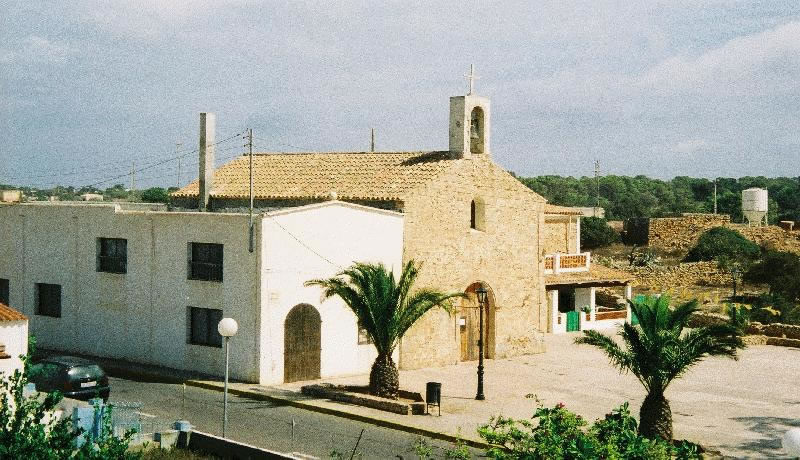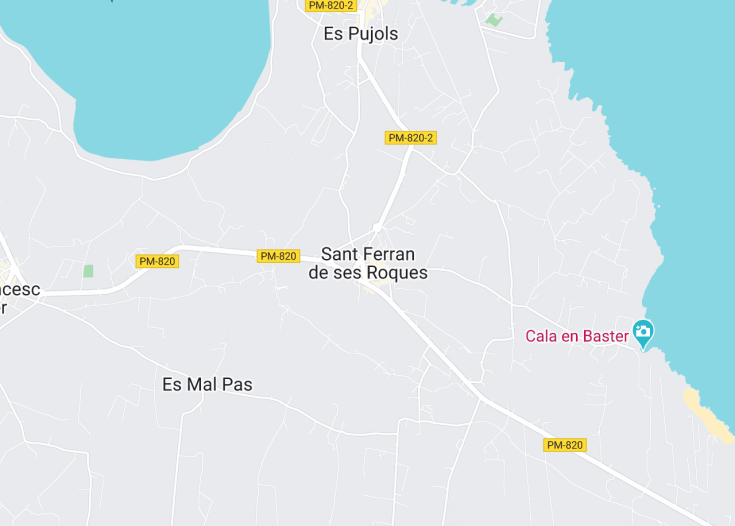Sant Ferran de ses Roques, positioned at the heart of Formentera in the Balearic Islands, serves as a charming gateway to the untouched beauty and cultural wealth of this tranquil island. This village is famed not only for its historical allure, with the eighteenth-century Church of San Fernando at its core, but also for its vibrant arts scene and lively night markets. Visitors to Sant Ferran de ses Roques enjoy a blend of rustic charm and contemporary comforts, making it an ideal stop for those seeking a serene yet enriching experience.
Be sure to visit the local markets held on Thursdays and Saturdays; they offer a wonderful opportunity to purchase unique artisan goods and savor traditional Formenteran cuisine.
Plan your visit during the spring or early autumn to enjoy the pleasant Mediterranean weather without the peak season crowds, enhancing your experience of the island’s serene beauty.
Top things to do & see in Sant Ferran de ses Roques
Select the following sights and activities to discover best tickets and tours available in Sant Ferran de ses Roques.
Sant Ferran de ses Roques: A Hidden Gem in the Mediterranean
| Country | Formentera (Balearic Islands, Spain) |
| Time in Sant Ferran de ses Roques | GMT+1 |
| Language spoken | Spanish |
| Population | 740 (source: latest municipal data) |
| Currency | Euro (€, EUR) |
| Airports |
|
Sant Ferran de ses Roques, an enchanting village on the island of Formentera in the Balearic Islands of Spain, beckons visitors with its serene beauty and rich cultural heritage. Nestled between the popular destinations of Ibiza and Mallorca, Sant Ferran remains a peaceful haven that offers an authentic slice of island life. It is an integral part of the island’s community and serves as a gateway to exploring the unspoiled landscapes and coastal stretches that characterize Formentera.
Historically, Sant Ferran has been a focal point for rural life on the island. Its white-washed houses, narrow streets, and the iconic church at the center of the village paint a picturesque scene. It is not only the architecture that draws attention; the village is also famed for its lively local scene, featuring traditional eateries and cafes where one can enjoy the local cuisine.
The surroundings of Sant Ferran are ideal for nature lovers and adventurers alike. The area is known for its excellent hiking trails and cycle paths, curving through some of the most scenic parts of Formentera. Moreover, Sant Ferran’s proximity to the island’s mesmerizing blue waters makes it a favorite among those who seek a tranquil beach experience away from the usual tourist spots.
Cultural enthusiasts will find Sant Ferran de ses Roques a treasure trove of local traditions and arts. The village hosts several cultural festivities throughout the year, drawing on the rich folkloric traditions of the island. One of the highlights is the annual festival that celebrates local music, dance, and food, giving visitors a genuine feel of Formentera’s vibrant local culture.
Where is Sant Ferran de ses Roques?
Located in the heart of Formentera, Sant Ferran de ses Roques is easily accessible yet wonderfully secluded, offering a peaceful retreat from the bustling tourist centers of the Balearic Islands.
Distances:
| Route | Distance by car | Time by car |
|---|---|---|
| From La Savina (Ferry port) | 5 miles / 8 km | 10 mins |
| From Es Pujols | 2 miles / 3.2 km | 5 mins |
| From Cap de Barbaria Lighthouse | 8 miles / 13 km | 15 mins |
What is Sant Ferran de ses Roques famous for?
Sant Ferran de ses Roques is renowned for its vibrant cultural scene, historical architecture, and superb local cuisine, making it a pivotal spot in Formentera’s cultural and social landscape.
History
Prehistoric to Roman Era
Sant Ferran de ses Roques, located on the enchanting island of Formentera in the Balearic Islands, has a history that traces back to prehistoric times. Archaeological findings suggest that the area was occupied by early settlers who left behind remnants of their existence. As time progressed, the Romans made their mark on Formentera, utilizing the island for its salt pans and strategic maritime position. Little is documented about the village of Sant Ferran itself during these ancient times, but it undoubtedly felt the ripples of these larger historical movements.
Medieval Period
The Medieval period brought about significant transformations. With the fall of the Roman Empire, the Balearic Islands, including Formentera, experienced a series of invasions and dominations, notably by the Byzantines and later the Moors. Sant Ferran de ses Roques began to develop more concretely during this time, though it remained a relatively quiet agricultural area. The island was part of the Islamic world until the 13th century, when it was reconquered by the Christian forces led by King James I of Aragon, integrating it into the Aragonese kingdom.
1700s – 20th Century
Modern development in Sant Ferran de ses Roques began earnestly in the 18th century when it was established as a village. The construction of the Church of Sant Ferran de ses Roques in the late 1700s marks a pivotal moment in the village’s history; it served not only as a religious center but also as a community hub. In the following centuries, the village slowly grew, aided by its agricultural economy. The 20th century saw a modest influx of tourism, with visitors drawn by Formentera’s pristine natural beauty and tranquil lifestyle, impacting Sant Ferran and leading to gradual modernization.
Contemporary Period
Today, Sant Ferran de ses Roques has embraced its role as a serene and picturesque destination within Formentera. While it has seen development, particularly in catering to tourists, it retains much of its historical charm and laid-back atmosphere. The village is now known for its blend of historic sites, such as the enduring Church, and its burgeoning arts scene, evident in local galleries and occasional music festivals. It has maintained its agricultural roots too but balanced this traditional lifestyle with the demands and opportunities of contemporary tourism.
Visit Sant Ferran de ses Roques
What to see and do in Sant Ferran de ses Roques
Explore the heart of Formentera by visiting Sant Ferran de ses Roques. One must-see is the iconic Church of Sant Ferran, which stands as a testament to the village’s rich history. For a taste of local culture, the Mercat de Sant Ferran offers artisan crafts and local produce, particularly delightful on market days. Art enthusiasts will enjoy the local galleries showcasing contemporary art inspired by the island’s landscapes.
- Stroll through the historic village center
- Visit cultural exhibitions at the community centers
- Enjoy local cuisine at traditional Formenteran restaurants
- Explore surrounding natural landscapes by hiking or cycling
Annual Events in Sant Ferran de ses Roques
Sant Ferran de ses Roques hosts a variety of events throughout the year that celebrate its cultural heritage and vibrant community spirit. The most notable is the annual village festival, usually held in May, featuring music performances, traditional dances, and local gastronomy. Summer brings several art exhibitions and musical evenings, often held in open-air settings, which take advantage of the island’s pleasant weather.
Best time to visit Sant Ferran de ses Roques
The best time to visit Sant Ferran de ses Roques is from late spring to early autumn. May through October offers warm weather and low rainfall, ideal for exploring the outdoors and participating in local festivals. Additionally, during these months, the village and its surroundings are vibrant with cultural activities, making it a great time to experience the local lifestyle.
Is Sant Ferran de ses Roques worth visiting?
Sant Ferran de ses Roques is certainly worth visiting for those who appreciate a mix of history, culture, and natural beauty. The village offers a tranquil escape with its traditional charm and slower pace of life, providing a contrast to busier tourist spots. However, it may not cater to those seeking bustling nightlife or extensive shopping experiences. The limited public transport and amenities can also pose challenges for some visitors. Overall, it promises a genuine Formenteran experience, ideal for travelers looking for relaxation and cultural immersion.










